| Index > Gulls > Lesser Black-backed Gulls > | < Kleine Mantelmeeuwen < Meeuwen < Index |
2cy Baltic Gull/2kj Baltische Mantelmeeuw
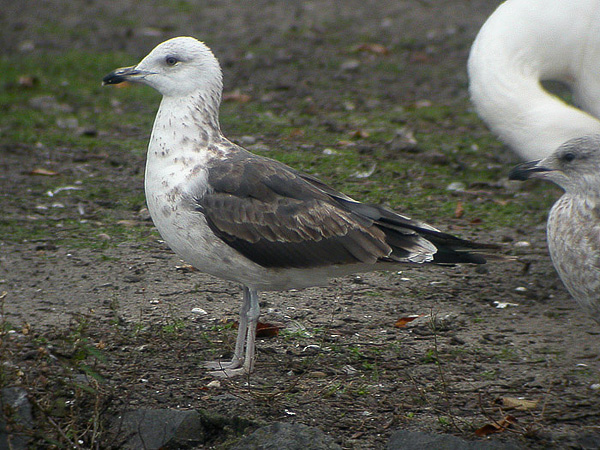
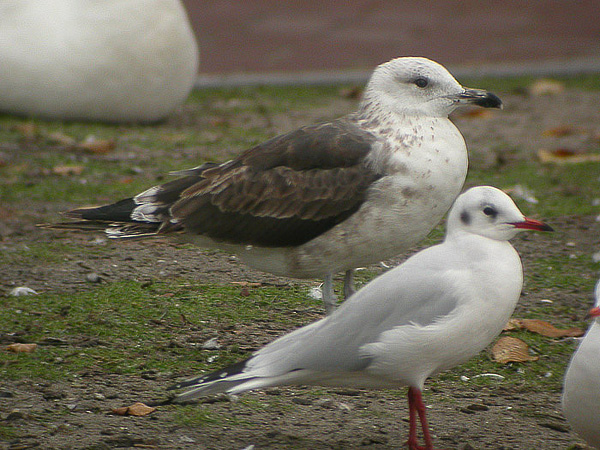
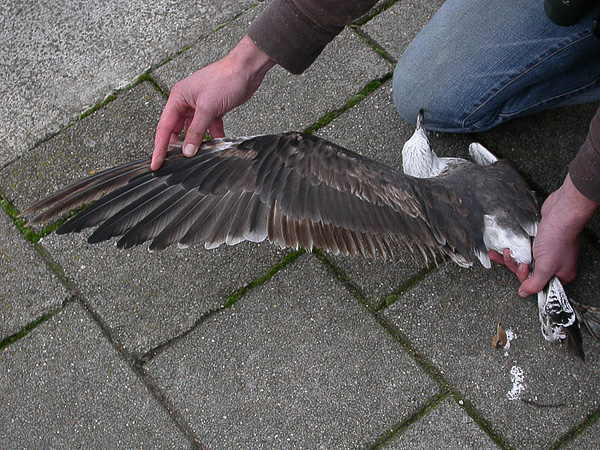
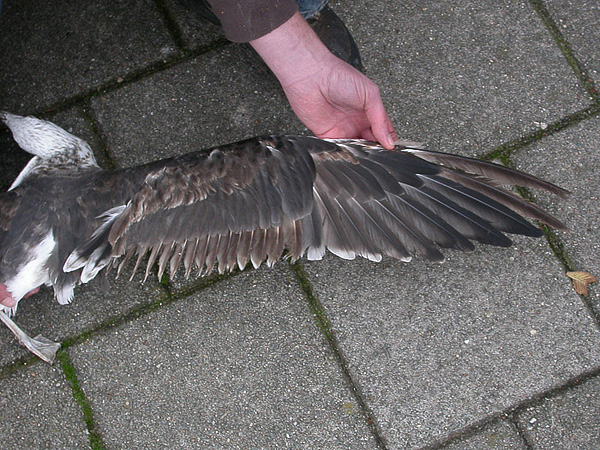
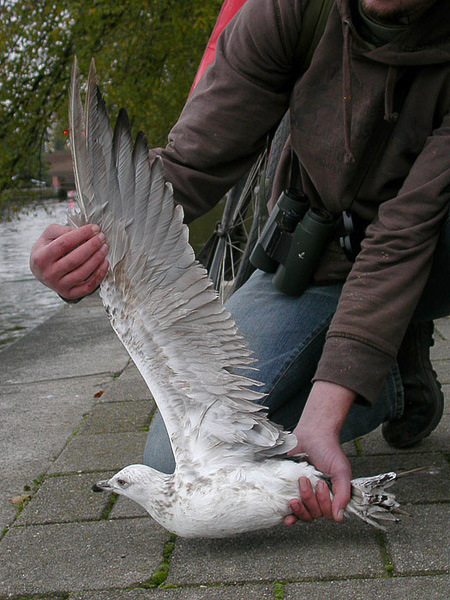
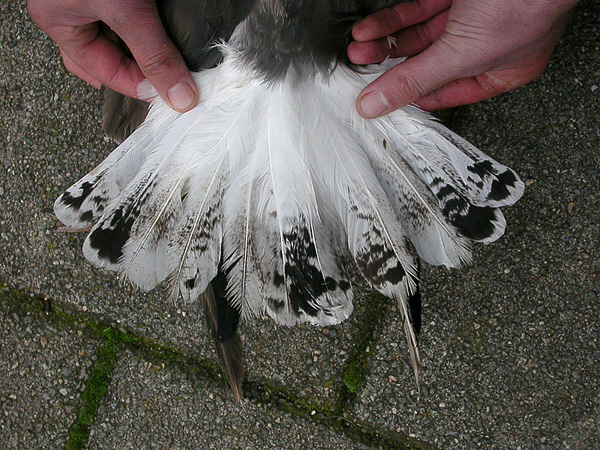
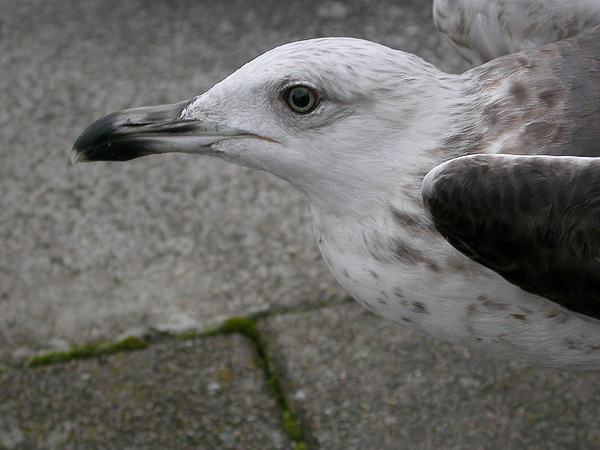
1-7: © Ruud Altenburg, 05-11-06. Valentijnkade, Amsterdam. A 2cy 'lesser black-backed gull' showing the odd combination of an advanced look with an extremely retarded moult. If birds start the first complete moult at a late date, they will not be able to moult the full hand in summer. Consequently, these 2cy birds will return south in autumn with juvenile primaries. This individual has renewed P1-8 (P8 is still growing) but P9-10 and all secondaries except for S1 in both wings are still juvenile and heavily worn. The tail shows two 'generations' of second generation feathers: worn (left R2-4 and right R3-4) and fresher feathers. Normally moult in the secondaries is started when P5-6 is dropped. A bird returning south with a nearly full set of juvenile secondaries is exceptional. A moult like this is seen in Heuglin's Gull L heuglini (in which this phenomenon is quite common), some retarded Baltic Gulls L f fuscus and probably only very sporadically in intermedius Lesser Black-backed Gulls. Several features seem to point towards fuscus, such as the very small size (tarsus = 58.1 mm; bill height at gonys = 14.6 mm; head + bill length = 91.3 mm), the blackish fresh scapulars and wing coverts and the very long wings (not measured). The bird has been ringed as Arnhem 5.362.496. Een 2kj 'kleine mantelmeeuw' die de vreemde combinatie toont van een vergevorderd uiterlijk met een extreem trage rui. Als vogels laat beginnen aan de complete rui zullen ze niet in staat zijn de complete hand te ruien in de zomer. Als gevolg hiervan zullen deze 2kj vogels in de herfst terugkeren met juveniele handpennen. Deze individu heeft P1-8 vervangen (P8 groeit nog) maar P9-10 en alle armpennen behalve S1 zijn nog juveniel en zeer sterk gesleten. De staart toont twee 'generaties' tweede-generatie veren: gesleten (links R2-4 en rechts R3-4) en versere veren. Normaal gesproken begint de rui in de armpennen als P5-6 uitgeworpen is. Een vogel die terugkeert met een vrijwel complete set juveniele armpennen is exceptioneel. Een vergelijkbare rui wordt aangetroffen in Heuglin's Meeuw (waarbij dit fenomeen relatief vaak voorkomt), enkele achtergebleven Baltische Mantelmeeuwen en waarschijnlijk alleen zeer sporadisch bij intermedius Kleine Mantels. Enkele kenmerken lijken richting fuscus te wijzen, zoals het zeer kleine formaat (tarsus = 58.1 mm; snavelhoogte bij gonys = 14.6 mm; kop + snavellengte = 91.3 mm), de zwartachtige verse schouder- en dekveren en de zeer lange vleugels (niet opgemeten). De vogel is geringd als Arnhem 5.362.496.
| Back | Terug |